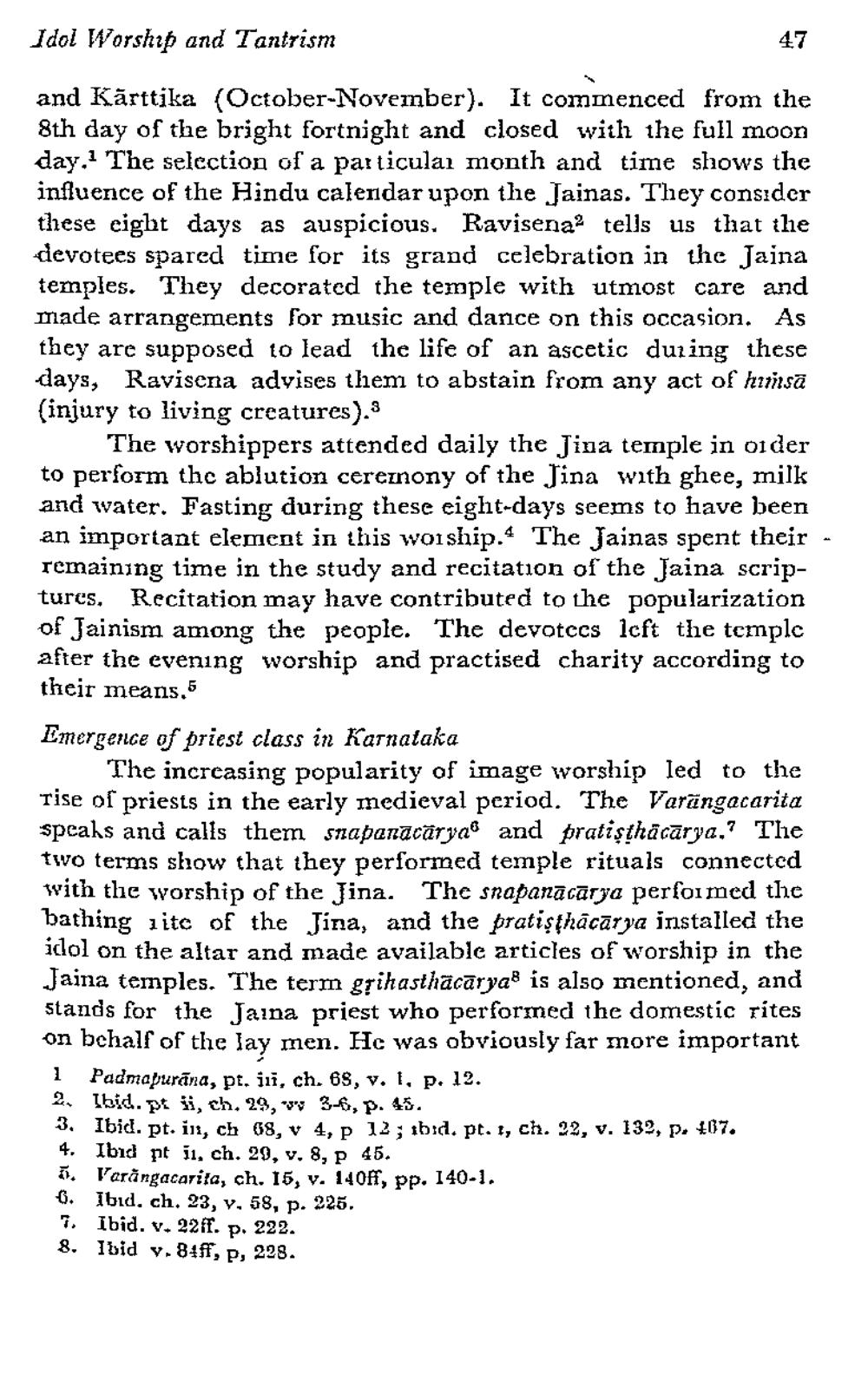________________
Idol Worship and Tantrism
47
and Kārttika (October-November). It commenced from the 8th day of the bright fortnight and closed with the full moon day. The selection of a particular month and time shows the influence of the Hindu calendar upon the Jainas. They consider these cight days as auspicious. Ravisena? tells us that the devotees spared time for its grand celebration in the Jaina temples. They decorated the temple with utmost care and made arrangements for music and dance on this occasion. As they are supposed to lead the life of an ascetic during these days, Ravisena advises them to abstain from any act of himsa (injury to living creatures).3
The worshippers attended daily the Jina temple in oider to perform thc ablution ceremony of the Jina with ghee, milk and water. Fasting during these eight-days seems to have been an important element in this worship.4 The Jainas spent their remaining time in the study and recitation of the Jaina scriptures, Recitation may have contributed to the popularization of Jainism among the people. The devotees lcft the temple after the evening worship and practised charity according to their means.5 Emergence of priest class in Karnataka
The increasing popularity of image worship led to the Tise of priests in the early medieval period. The Varängacarita speaks and calls them snapanācāryas and pratisthācārya.? The two terms show that they performed temple rituals connected with the worship of the Jina. The snapanācārya performed the bathing site of the Jina, and the pratisthācārya installed the idol on the altar and made available articles of worship in the Jaina temples. The term grihasthacārya8 is also mentioned, and stands for the Jaina priest who performed the domestic Tites on behalf of the lay men. He was obviously far more important 1 Padmapurāna, pt. iii, ch. 65, v. I, p. 12. 2. Ibid. pt i, ch, 29, 3-6, p. 45. 3. Ibid. pt. in, ch 68, v 4, p 12; ibid. pt. 1, ch. 22, v. 132, p. 407. 4. Ibid nt ii, ch. 29, v. 8, P 45. 7. Varängacarita, ch. 15, v. 140ff, pp. 140-1. 6. Ibid. ch. 23, V, 58, p. 225. 7. Ibid. v. 22ff. p. 222. 8. Ibid y. 84ff, P, 228.




